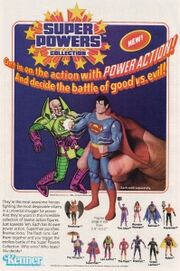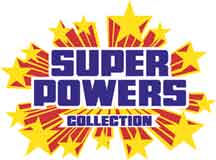Superman Fan (talk | contribs) mNo edit summary |
Superman Fan (talk | contribs) mNo edit summary |
||
| Line 113: | Line 113: | ||
==External links== |
==External links== |
||
* [http://www.toyotter.com/sp/figure.html ''Character Profiles'' from the Super Powers Collection] at the [http://www.toyotter.com toyotter.com] |
* [http://www.toyotter.com/sp/figure.html ''Character Profiles'' from the Super Powers Collection] at the [http://www.toyotter.com toyotter.com] |
||
| − | {{external links|August 2007}} |
||
* [http://www.toyotter.com/sp/ The Super Powers Archive] at the [http://www.toyotter.com toyotter.com] |
* [http://www.toyotter.com/sp/ The Super Powers Archive] at the [http://www.toyotter.com toyotter.com] |
||
*[http://www.toyotter.com/sp/ Jason Geyer's Super Powers Archive] |
*[http://www.toyotter.com/sp/ Jason Geyer's Super Powers Archive] |
||
Revision as of 15:00, 26 June 2009
| Wikipedia Article
This page uses the Creative Commons License for content originally from |
|
This article is an External Website Stub. |
The Super Powers Collection was a line of action figures based on DC Comics superheroes and supervillains that was created by Kenner Toys[1] in the 1980s.
Origin of the line
In 1984, DC Comics awarded the license of their characters to Kenner Toys, hot on the heels of Mattel's "action feature" heavy He-Man toy line. Winning the license away from Mego Corporation and Mattel with their emphasis on action and art, Kenner devised hidden mechanisms within the figures that would trigger an action when the figures legs or arms were squeezed. This emphasis on each figure's "super power" led to the naming of the line - The Super Powers Collection. Each figure in the first two series were also packaged with a mini-comic featuring that character's adventures (a detailed list of these minicomics can be found at List of Super Powers Minicomics).
Once the line was in full force a merchandising frenzy took place, with DC Comics and Kenner slapping a Super Powers logo on whatever they possibly could. Three series of figures and accessories were released: in 1984, 1985, and 1986.
Tie-ins

Advertisement for the first wave of Super Powers action figures from trade ads and covers in various DC comics published titles from 1984-1985.

An advertisement for the Warner Home Video video cassettes appearing in Flash #350.
DC Comics produced three comic book mini-series featuring characters from the toyline, one during each year of the toyline's existence. These comics were separate from the continuity of the regular comics featuring the characters.
Hanna-Barbera also produced two animated series (a refreshing of the venerable Super Friends concept), called SuperFriends: The Legendary Super Powers Show and The Super Powers Team: Galactic Guardians.
Warner Home Video used the opportunity to issue episodes of Superman, Batman, Superboy, and Aquaman produced by Filmation in 1966 on video cassette in 1985 under the Super Powers label, reissuing them again in 1996.
Other tie-in products were produced, including lunchboxes and posters. Only the toy line carried the "Collection" tag; all other merchandise would have a solo "Super Powers" logo.
Figures
Based on definitive style guide artwork, with moderate articulation and hidden action features, the Super Powers Collection eventually released 34 figures, eight vehicles, and one playset. The following figures were released to regular retail outlets during the three years the line was produced:
|
Series One
|
Series Two |
Series Three |
In addition, a mail-in only exclusive Clark Kent figure was produced. Latin American toymakers also introduced two more characters: The Riddler, which was a Green Lantern repaint released in Argentina, and Captain Ray, an exclusive character released in Colombia.[?]
Vehicles and playsets
Several vehicles were released as part of the line:
- Supermobile
- Batmobile
- Batcopter
- Delta Probe One
- Justice Jogger
- Darkseid Destroyer
- Lex-Soar 7
- Kalibak Boulder Bomber
In addition, a Hall of Justice playset (based on the headquarters of the characters in the Super Friends cartoon) was released. Another playset, Darkseid's Tower of Darkness, made it to the prototype stage but was not mass produced.
A collectible is born
Highly prized today, Kenner's distribution practices of including up to 18 of one character in a case of 24 led to a glut of the core characters throughout the life of the line, and a rapid demise. Due to this practice, certain figures such as Cyborg, Golden Pharaoh, and Plastic Man remain rare to this day while the Flash and Superman are easily found. Another reason the Super Powers Collection is so highly sought after is the inclusion of both popular and little-known characters throughout the line. While the First Series featured well-known characters, the Second Series concentrated on figures from Jack Kirby's New Gods Saga, and the Third Series mixed both DC Comics acquisitions from other companies and figures created solely for the line. On a side note, Kirby received some of the only royalties of his long career for redesigning his characters for Kenner. Artist George Pérez also received royalties for his design of Cyborg and redesign of Lex Luthor and Brainiac. Most all other designs (and much of the packaging artwork) is based on José Luis García-López's classic DC Style Guides. Other artwork used appears to be the work of Dick Giordano.
End
After three years of production the line collapsed. The same year, coincidentally, Kenner's Star Wars line stopped shipping to stores. After 10 years of chronicling the history of the Super Powers Collection, in 2003 toy historian Jason Geyer's ToyOtter website revealed the never seen designs for the unmade Series Four, Five, and Six, along with vehicles, playsets and a deluxe "Power Plus" figure line. The most famous of these is the Man-Bat figure, of which an actual prototype was created.
Changing Licensing Practices
Prior to Super Powers, one manufacturer (in this case, the Mego Corporation) licensed both DC and Marvel characters for action figures. When the Secret Wars toyline, by Mattel, came onto the retail toy scene, it was setup as direct competition for the Kenner line. These figures, similar in scale to the Super Powers Collection, introduced a completing marketing strategy between manufacturers of Marvel and DC action figures, continuing to separate the comic book publishers' character licenses. That trend continues to this day.
Toy Biz DC Superheroes Line
The DC Super Powers line, in many ways inspired the 1989 Toy Biz DC Super Heroes toyline in design. This line, merging with the Batman (1989 film) toyline would borrow design elements from many of the Kenner figures, most notably Superman, Robin, and Penguin who were near identical copies of the Kenner figures.
External links
- Character Profiles from the Super Powers Collection at the toyotter.com
- The Super Powers Archive at the toyotter.com
- Jason Geyer's Super Powers Archive
- Unreleased Super Powers Toys
- A Super Powers Appreciation
- Mike Mensinger's Super Powers page
- ToyOtter - Unproduced Man-Bat figure


